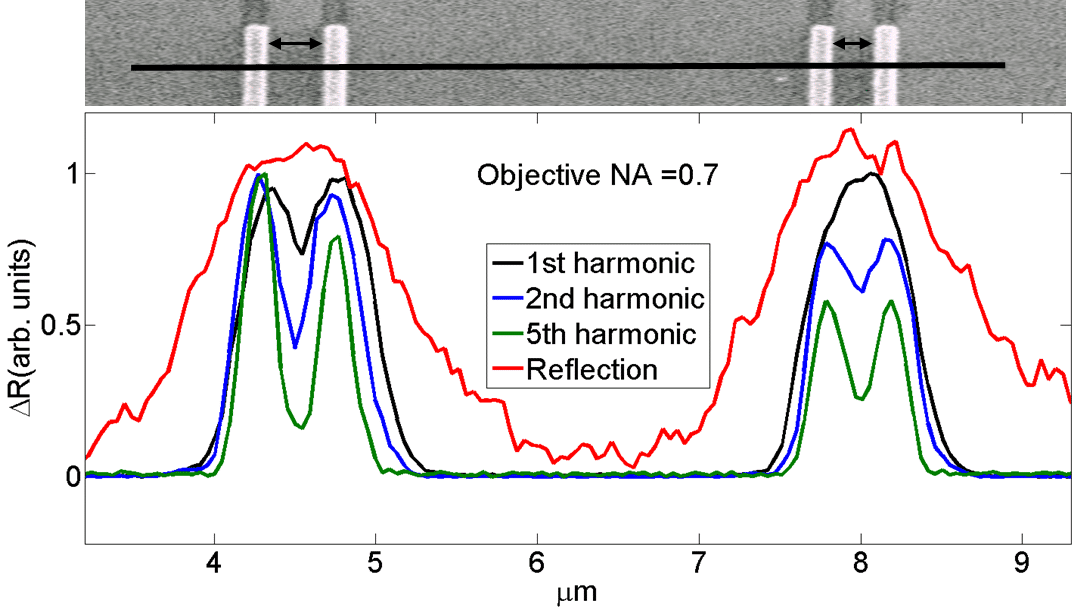
SUPER RESOLUTION MICROSCOPY BASED ON PHOTO-MODULATED REFLECTIVITY
Far-field super-resolution (SR) microscopy has developed to be an important tool in life sciences. However, it relies on, and therefore is limited by the ability to control the fluorescence of label molecules.
We introduce a new far field label-free SR methodology that is based on the nonlinear response of the reflectance to photo-modulation. It relies on the ability to photo-excite a temperature and charge carriers spatial distribution inside the diffraction limited spot by an ultra-short pump pulse. An overlapping delayed probe pulse monitors reflectance changes. Spatial resolution within the diffraction limited spot is enhanced due to nonlinearities in photo-modulated properties of the matter. The method is suitable to characterize semiconductors and metals in vacuum, ambient, and liquid, semi-transparent and opaque systems, ultrathin and thick samples alike.
Examples of such resolution enhancement due to nonlinearities (lateral and vertical) will be presented: The change of thermo-reflectance of VO2 upon its characteristic insulator-to-metal transition at ~340K, the heating process of a nanostructured silicon or gold surfaces, and the nonlinear response of photo-modulated Raman spectra. Resolution down to 85nm is demonstrated.

- O. Tzang, A. Pevzner, R.E. Marvel, R.F. Haglund, O. Cheshnovsky, "Super-Resolution in Label-Free Photomodulated Reflectivity" Nano Letters, 15, 1362 (2015).
- O. Tzang, O. Cheshnovsky,"New modes in label-free super resolution based on photo-modulated reflectivity"
Optics Express, 23, 20926 (2015). - O. Tzang, O. Azoury D. Cheshnovsky, "Super resolution methodology based on temperature dependent Raman scattering, Optics Express, 23, 17929 (2015).
Powered by Eventact EMS